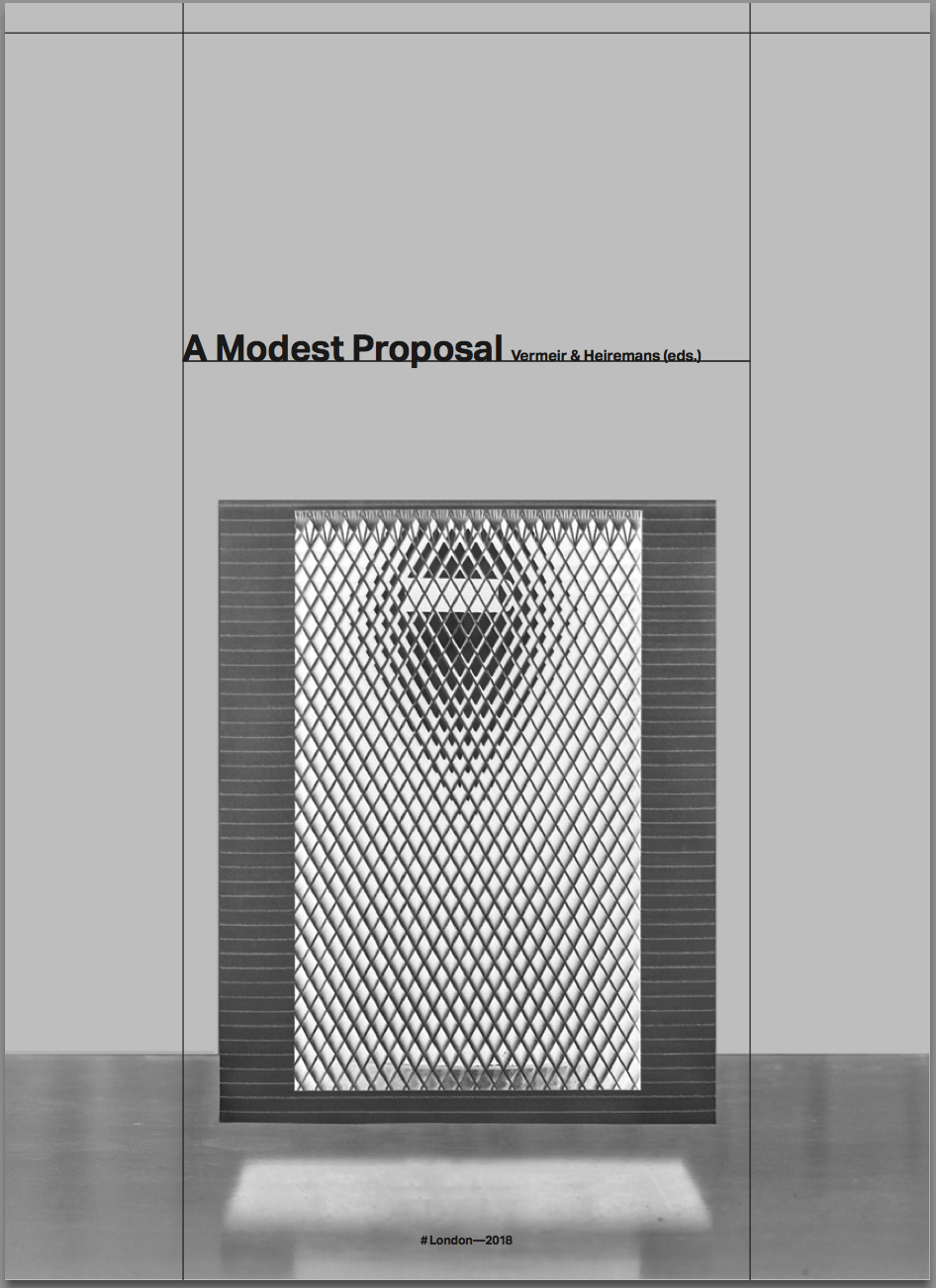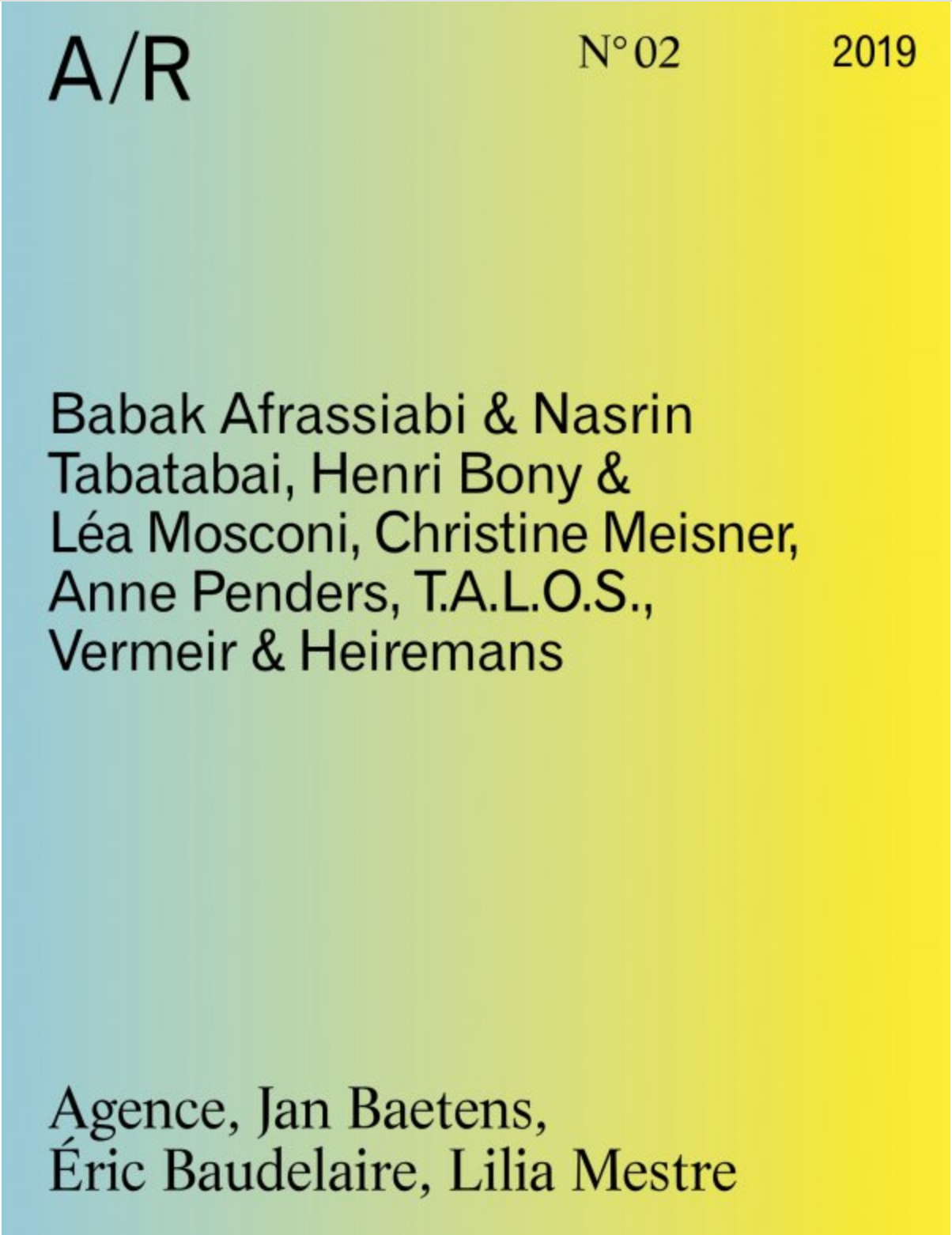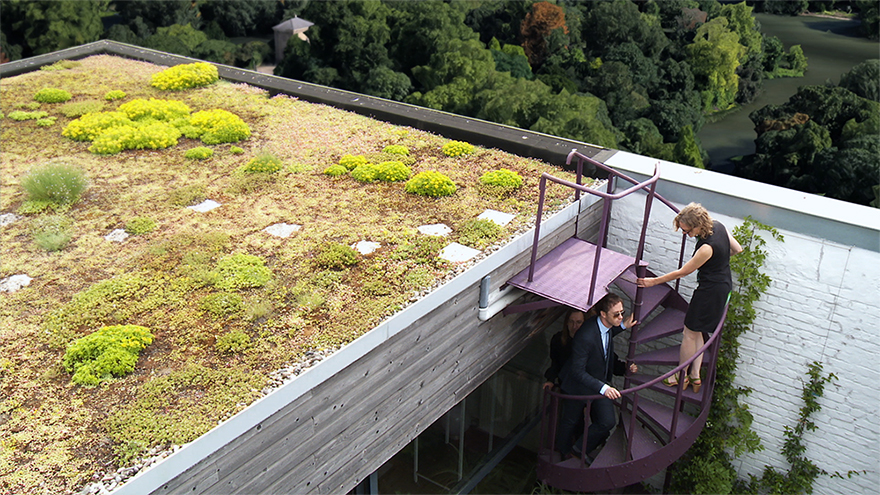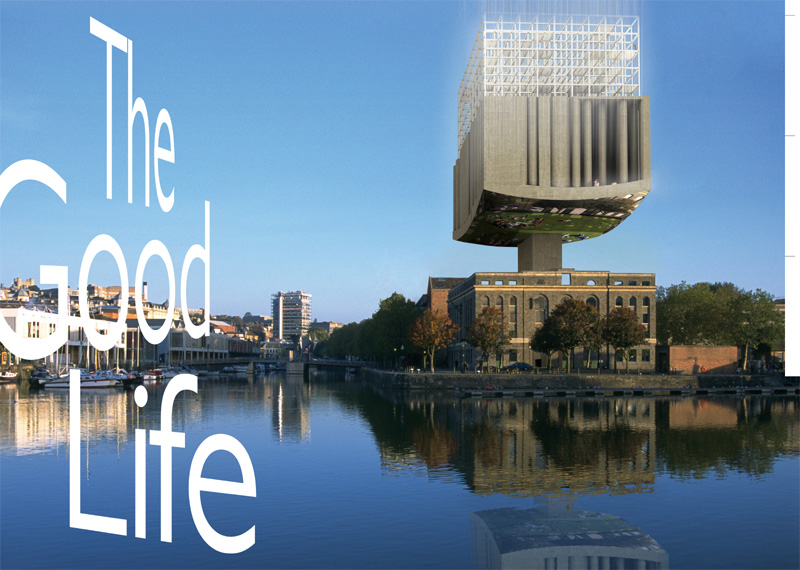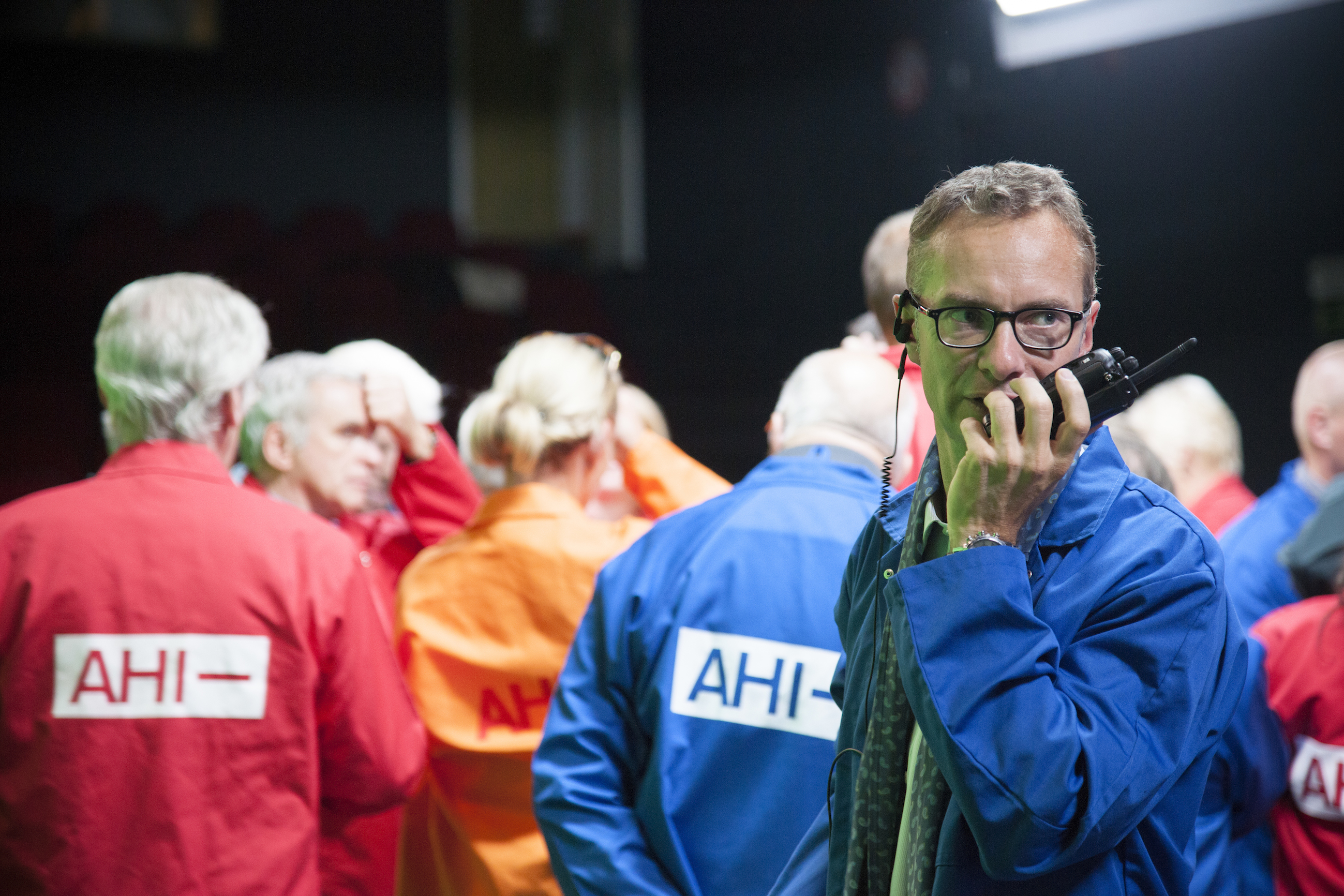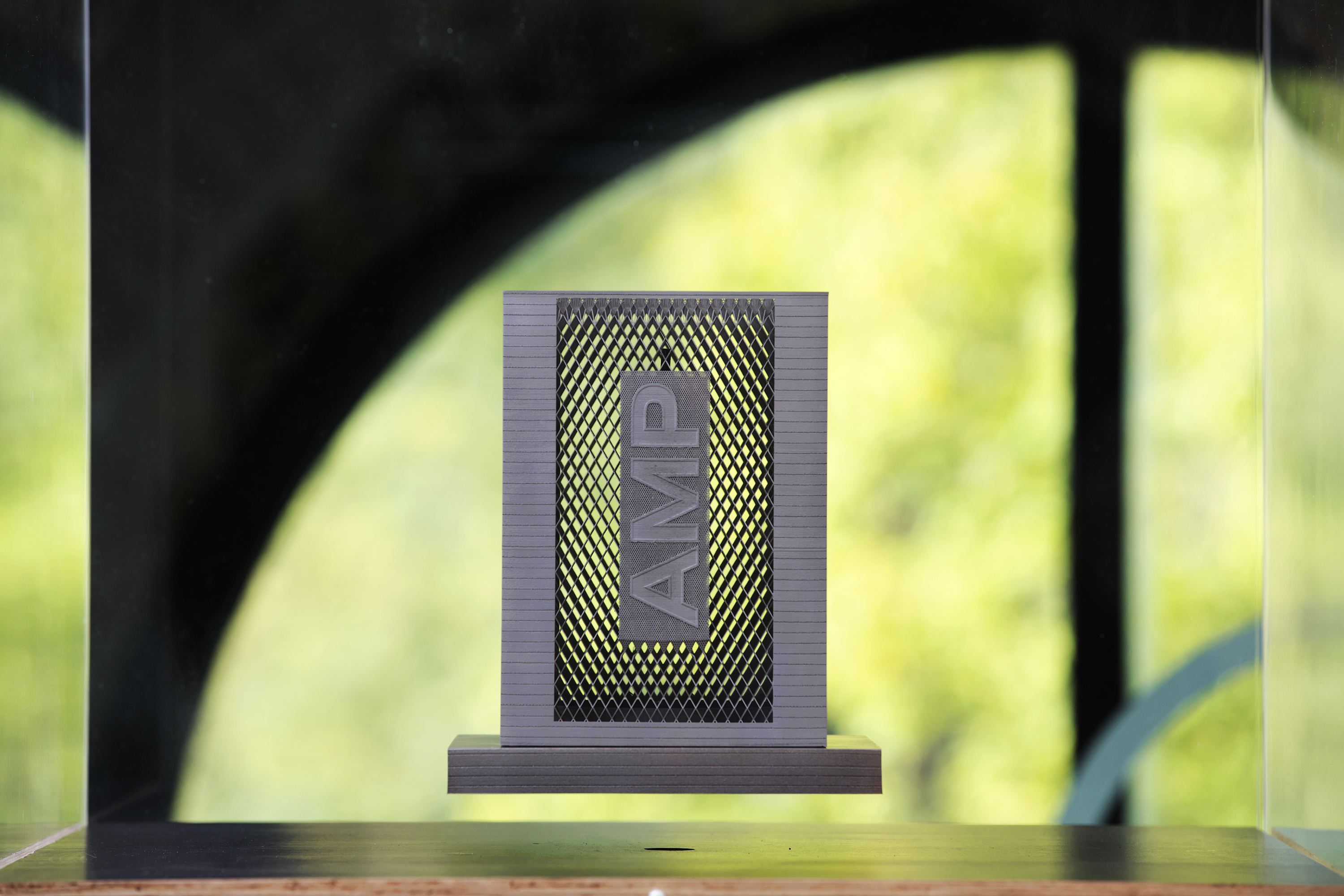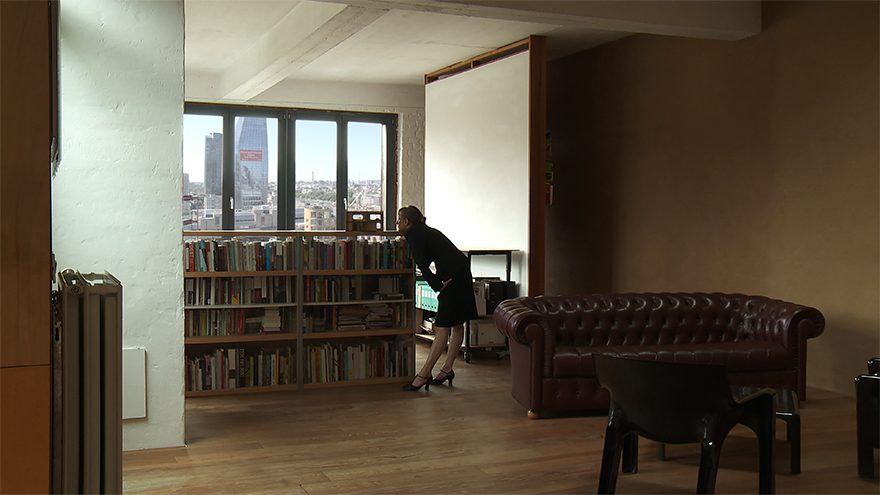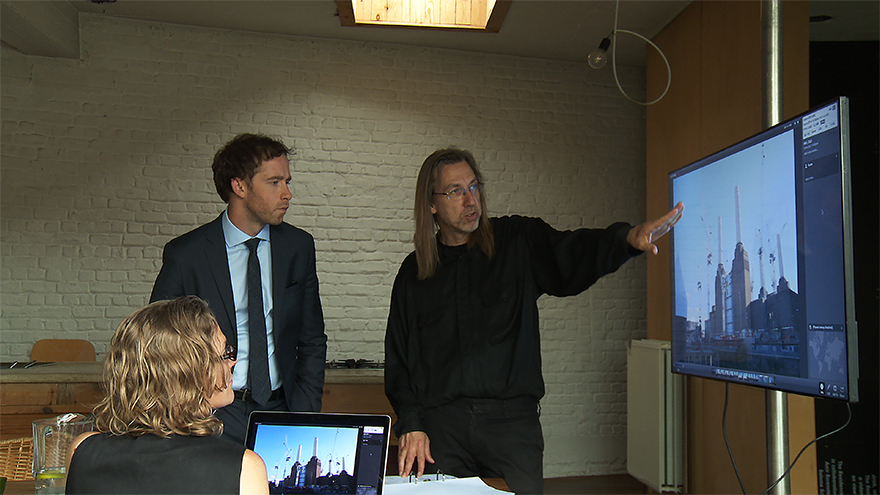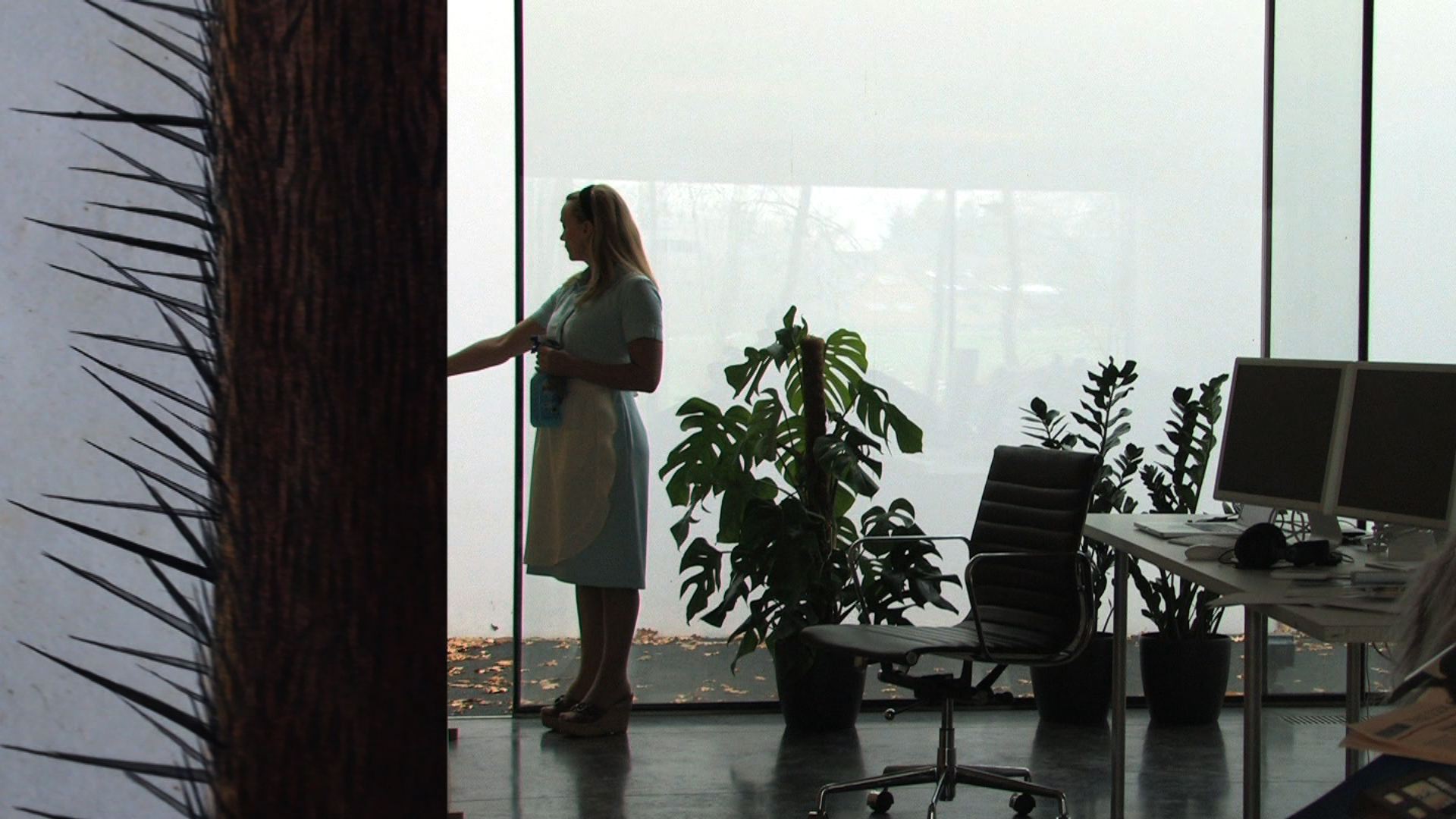Server: Apache/2.0.54 (Debian GNU/Linux) PHP/4.3.10-18
Content-Length: 1742
Connection: Keep-Alive
200 OK
A.I.R extension#07/lecture-performance with Eric Jooris
Hello Eric,
We have found some time to reflect on the things we spoke about, when we visited your office on November 24 2008. Below we will try to give you an insight into our understanding of that discussion. It can function as a point from which to continue our mutual investigation.
We will not repeat the conceptual premises of our project, but will consider those as fully understood from our first discussion.
In THE GOOD LIFE the architects of 51N4E came up with a visionary idea for a building. We were wondering what would happen in case the proposed building (which in our project exists only as a plan and a model) was to be realized; if the idea became an actual building. How would this new situation influence the concept we developed, and more to the point, would there be a good way to connect what we have named ‘the artistic intervention’, as unalienable to the building, even in case of it being built.
You argued that an artist has a moral right to authorship of his work and to its integrity. So people cannot just change something in the work of art. But what does it mean to “change” something? Is changing the work’s context, or moving it, modifying the artwork itself? You answer to that question was “Yes”. And we can fully agree on this.
We remember you explaining that the artist has rights on what he creates, on two specific conditions.
Condition 1:
THE WORK IS ORIGINAL; IT IS HAS TO BE FROM HIS HAND.
This seems to be the case in THE GOOD LIFE.
Our concept is original. The architects created something original, as did other participants, like the designer, the actress and the sound artist. Every contributor to THE GOOD LIFE can claim authorship of a specific part of the project. We, the artists who initiated this project, can claim authorship of some of the specific elements as well, mainly related to publication and video film, but that is a bit obvious. At the same time we would claim authorship of the shell, the contextualization, that encapsulates all these separate authorships; we would claim authorship of the in-between space, the space in between the operational value of the different tools that have been developed within the context mentioned. This in-between space we consider the prime artistic intervention in THE GOOD LIFE.
You drew a comparison to our house, which we also define as an artwork through a practice we have named A.I.R. Through it our house is hidden (remains private) and is unveiled (becomes public) in different ways. It exists in reality, as a proper house, yet considered as ‘art piece’ the house is not accessible. So how can we claim an art status for this house, other than by providing purely ‘circumstantial evidence’, elements of prove being: there has been a lecture on this house and the lecture was an art performance, or a book about it, there is a video work about it that has been shown in an art exhibition…
You referred to our house as an artwork, as to a black hole, a void…on which we occasionally shed some light from different angles. In this way the house as an art piece becomes illuminated, becomes visible. It becomes possible for other people to get an impression of the house as an artwork. This is the overall situation, and adding more light – being the series of extensions we develop within the context of this project – will not change or influence the overall situation.
In your opinion the same goes for THE GOOD LIFE, the Arnolfini project, but only just as long as the project has not been built.
The ‘projected’ building, which is central in the development, but also in the concept of the project – is visible merely as a negative form, a form which only becomes perceptible by the presence of the things surrounding it. These things we defined as the tools we have developed for the occasion. The film, the media campaign, the real estate brochure, the architectural model and the artist impressions, they all inscribe themselves in the project as marketing tools, as instrumental in the process towards actual realization of the project, which is the construction of a new building.
In this stage everything – the specific parts as well as the relation between them – is protected as an artwork. That is what we understood. However, if the project is built, the black hole disappears. From a legal point of view there arises a problem. And this problem is connected to condition 2: THE WORK OF ART HAS TO BE EMBEDDED IN A FORM PERCEIVABLE BY THE SENSES.(see, hear, taste…).
IDEAS AS SUCH ARE FREE, and cannot be claimed by any author.
As an example of this ‘problem’ you mentioned the ‘Silence’ piece of John Cage, which the Cage foundation didn’t seem able to protect in terms of copyrighting it. As you said, silence belongs to all of us.
So let’s return to THE GOOD LIFE, and apply all details we spoke of: it is safe to say that in its initial stage THE GOOD LIFE, which coincides with its presentation in an art show in the ground floor Arnolfini gallery, and which presents video, brochure, architectural model & plans, it is clearly defined in terms of artistic authorship, both for the parts of the show as for the whole.
Now your thesis in this is that, the moment the building will be constructed the authorship rights on the whole are jeopardized, or even not existing anymore. Meaning that what we consider the art piece (what we defined in this text before as the ‘in-between space, the space in between the operational value’) as such would simply return to the free realm of ideas. Even if we were to sign a contract, which would by necessity limit itself to all parties involved, the in-between space would never be covered by that contract, not even with the people who signed the contract.
So why is this? You said, and correct us if we’re wrong, that the nature of the project would change completely in case of the new building, which in THE GOOD LIFE is a projection, would be built. Can we refer in this case to right to ‘integrity’, meaning you cannot change anything in the work (not even the context) without changing the work? So that does not seem hard to understand, in case the building is constructed something in the project will definitely have changed…
One question remains however. In case of realization of the building, will it still be possible to define the whole as an artwork. There is no ambiguity as far as the different parts – the tools – are concerned. They remain what they are. For the concept that connects them, the question urges itself, since in that concept the building is ‘exceptional’ and its value will be defined by it not merely being a nice piece of real estate, but also by its being a work of art.
Maybe at the moment of its realization it is no longer a work of art, at least not the one we have named THE GOOD LIFE. We wonder if there is a way round to this?
You have argued in our discussion that
YOU ARE AN ARTIST IF YOU CAN CLAIM RIGHTS, OTHERWISE YOU ARE NOT AN ARTIST, AT LEAST NOT FROM A LEGAL POINT OF VIEW, OR THE LAW SHOULD HAVE TO BE CHANGED.
And consequently we, the artists who initiated all this, will not be able to defend the artwork. Since the law will not be changed; since the real estate context in the rough ride towards becoming real, will rule out the possibility for art to survive; since all the spotlights will be on the new building, the building will take central stage and what we did will become insignificant.
So maybe we can publish the agreement we mentioned above; maybe we can construct a reference in history, a reference to the moment this building was undeniably a work of art.
RH-KV/12/2008
Eric Jooris is Attorney & Managing Partner at Jooris - Van Melkebeke – Leduc, a firm that specialises in the field of intellectual property law and that has built specific expertise in copyright, media law, art and culture law as well as unfair competition at Belgian, European and international levels.
